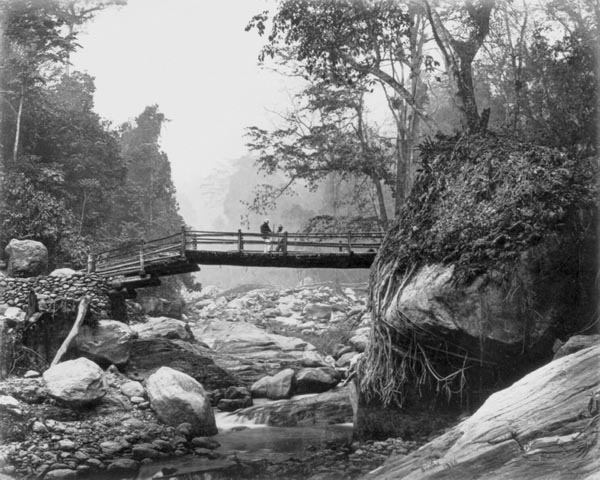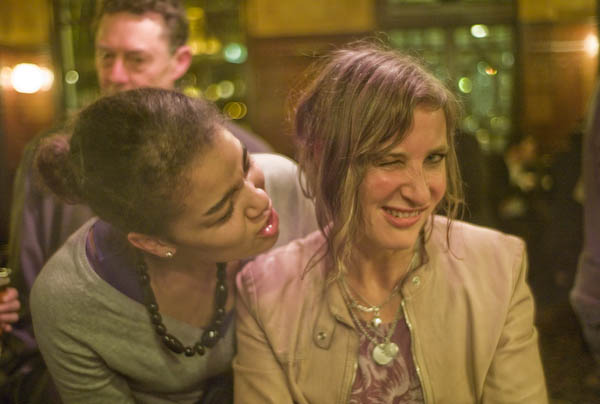Yesterday I had an afternoon out in London with three friends, all photographers. It was very much arranged at the last minute, (is there another way?) and we agreed to meet up at the Photographers’ Gallery at 1pm.
So of course Paul and I had to phone Michael and John and re-arrange it for 1.30pm as sorting out a few things on Paul’s computer took longer than I’d expected (that kind of job always does.) We met Michael at 1.30 and wandered into the gallery to look at the current show. It didn’t take long.
The stuff on the walls didn’t really have much connection with photography, although there were photographs. Most of them singularly devoid of any interest, and nothing I’d put on any wall, least of all that of a gallery of photography. I’m sorry, but I think photography galleries should show photography. Not third-rate art that makes use of photographs.
On the stairs leading up to the print room there were some real photographs, pictures of explosions by Sarah Pickering that I mentioned on About Photography when she won a Jerwood Award for another series two years ago. It was good to see the actual prints, although I didn’t feel they added to the work, which is perhaps best suited to be a magazine feature.
The print room is always worth a visit, with some old favourites on show (not always the same old favourites though.) Yesterday these included one of my favourite Thurston Hopkins images (you can currently still read a long feature I wrote on him at About Photography) of a kid playing a Red Indian coming up out of a manhole, as well as a rather substandard print of one of my favourite Bert Hardy images. The dodging of the vital central point of the image was so dodgy it would have made my wastebin rather than the exorbitant sum at which it was priced.
John still hadn’t arrived, so we went to wait in the Porcupine on the corner. In the past I’ve often sat and talked in the upstairs ‘Theatre Bar’ there with photographers and others after events at the Photographers’ Gallery. Once he arrived, we soon rushed off for roast beef at one of my favourite London pubs, the Cheshire Cheese in Fleet Street (though Fleet Street is now only a pale shadow of its old self.)
Unfortunately we didn’t have time to linger – it’s a great place for getting to know interesting strangers – but had to rush off to see some real photos. May seems to be Magnum month, and our route took in Martin Parr at Rocket, Alex Soth at Host and Ian Berry in the Magnum Print Room.
The last major project by Parr that I’d see was Mexico, and I found the work at Rocket rather more satisfying. In A8, Scotland he seems to be back to making real pictures rather than throwing a book together ASAP. The small prints for Parking Spaces were perhaps less impressive, more like a set of work awaiting an editor. This editor would say it was a promising start, but he would like to see some more work, but he’s a hard taskmaster. Long ago I asked another distinguished Magnum member at a lecture at the Photographers’ Gallery how he knew when he had finished a project. His answer (in my words) was when he could find someone who would publish it. Sometimes I feel it is too easy for some people to get stuff published.
Funnily enough, Parking Spaces is exactly as I suggested, an opportunity to be an editor. Having written my note above, I turned to the gallery handout, where I find that you are invited to select a portfolio of 12 images – for a mere £2500 – or £4500 if you hang around too long. Given the current prices of photographs, this represents excellent value for 12 Martin Parr images, even if the are only 12″x15″, indeed it is only the same price as a single 20×24″ image from A8.
Actually I think 12 is about the right number from this set of images. If you decide to buy, there is just a small chance you might get the right 12, so it should perhaps be seen as a kind of lottery. Of course you might just get me to select the right 12 for a suitable fee. I’d accept the same fee as Martin.
Another short bus ride took us to Host, and Alex Soth’s Niagara. Some great pictures (and here the large print size seems justified) but a disappointing show because there really was not enough on the wall to tell the story. Apparently this was the photographer’s call, but I don’t feel he got it right. It isn’t a big space but there was room for more. They needn’t all have been big prints – even some contact prints would have made this from a few great pictures into a real exhibition.
If you don’t know where the Magnum print room is, make sure you take the exact address or phone number or you will probably never find it. One small plate among others by the side of an anonymous door into a large office block is its only notice. Although the Ian Berry show ends today, there are other shows there.
Many of Berry’s prints were old friends, but I have to admit that there were quite of few of these I had forgotten were by him. His is work that particularly well sums up a vanished England past, which now feels suprisingly ancient history despite the comparatively recent date of his images. Did we really look like that?
When his book ‘The English’ came out in 1978, I remember feeling what an old-fashioned view it seemed, almost as if he was still photographing his childhood in the North in the 1940s and early 50s (he was born in 1934.) We all filter our experience through our own ideas of what makes a photograph.
Peter Marshall

